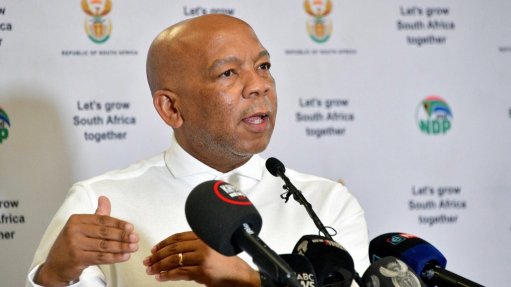
Electricity Minister Kgosientsho Ramokgopa
Electricity Minister Kgosientsho Ramokgopa says that work is under way on the creation of an “instrument” that will allow poorer households to participate in the ongoing roll-out of rooftop solar systems – a trend currently dominated by higher-income households and companies.
Speaking during his weekly briefing on the Energy Action Plan (EAP), the Minister said the current incentives available from the National Treasury, as well as the financing available from banks, presupposed that firms and households had financial resources available upfront to investment in solar generation.
He argued that a different method of funding would be required to “democratise” the deployment of rooftop solar but provided no details on the nature of the instrument, nor on when it might be launched.
Ramokgopa’s comments follow the release by the South African Photovoltaic Industry Association (SAPVIA) of data showing that the country’s total installed solar photovoltaic (PV) capacity stood at 5.5 GW at the end of the first quarter of 2023, a sharp rise from the 2.8 GW recorded for the fourth quarter of 2022.
The residential market, SAPVIA said, made up 11% of the installed capacity, or 620 MW.
The rest of the small-scale embedded generation market, comprising mostly rooftop systems of below 1 MVA installed on houses and at commercial and industrial facilities, stood at 1 247 MW, or 33% of installed capacity.
Ramokgopa said the rise in rooftop installation was in line with Outcome 4 of the EAP but could pose a risk to municipal and Eskom revenues, given that most of those migrating to rooftop solar with “good payers”.
A “rethink” on how municipal revenues were secured was required, given that electricity revenues formed a significant portion of overall revenue collections that, on average, covered 90% of a municipality’s revenues, with the balance arising from the National Revenue Fund.
Electricity wheeling revenue could help bolster revenues, with the National Energy Regulator of South Africa currently adjudicating the framework.
However, it is widely accepted that the tariff structure will also have to be adjusted to accommodate a shift from volume-based payments to one where grid services are reflected separately.
Meanwhile, Ramokgopa endorsed the virtual wheeling pilot being undertaken by Eskom and Vodacom, which had the potential to safeguard Eskom Distribution and municipal revenues, while allowing for the customers with distributed facilities to integrate renewable energy purchased from independent power producers.
The virtual wheeling scheme, which Eskom hopes to roll out to the rest of the market before the end of 2024, is a contracting platform that allows for one or more generators to transact with multiple customers that have distributed operations, including facilities located in municipal distribution areas and connected to low-voltage networks.